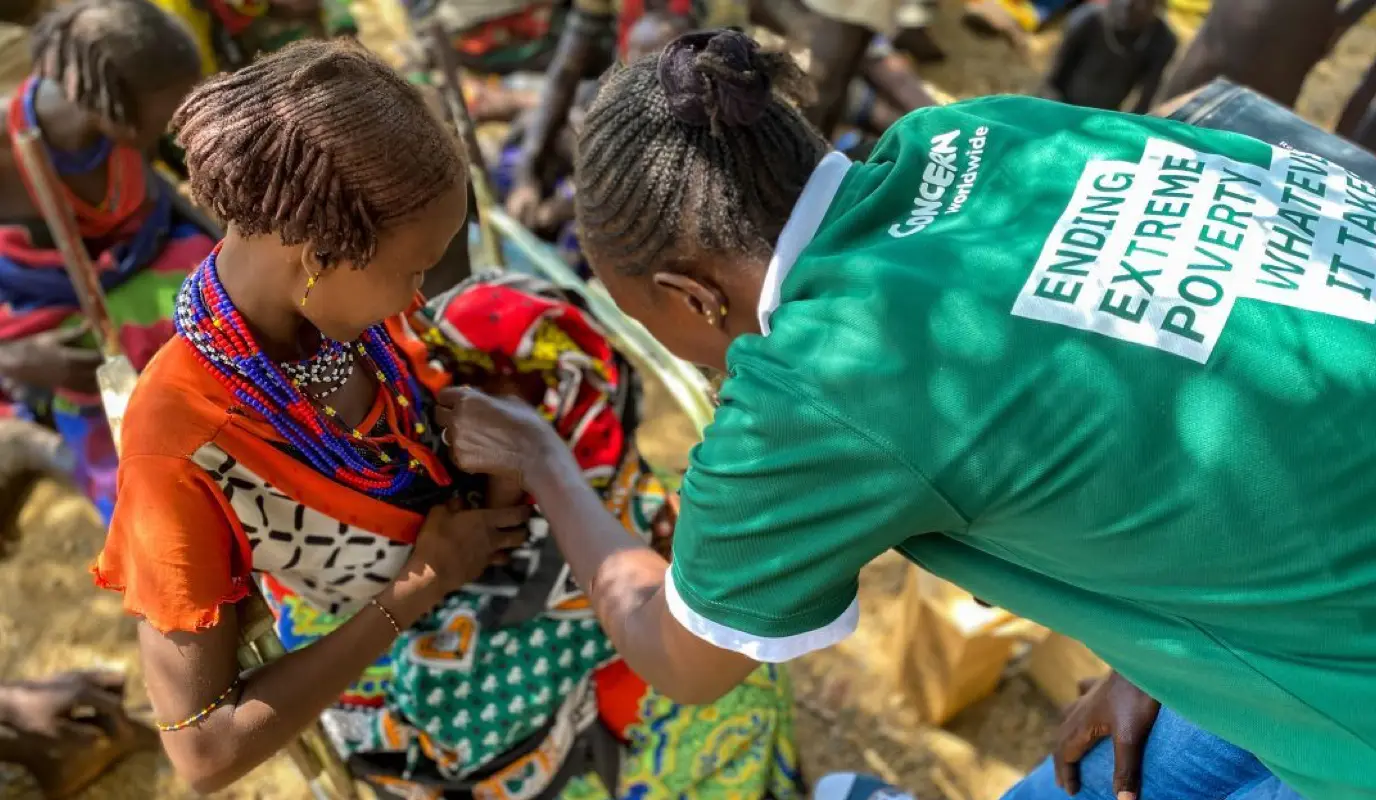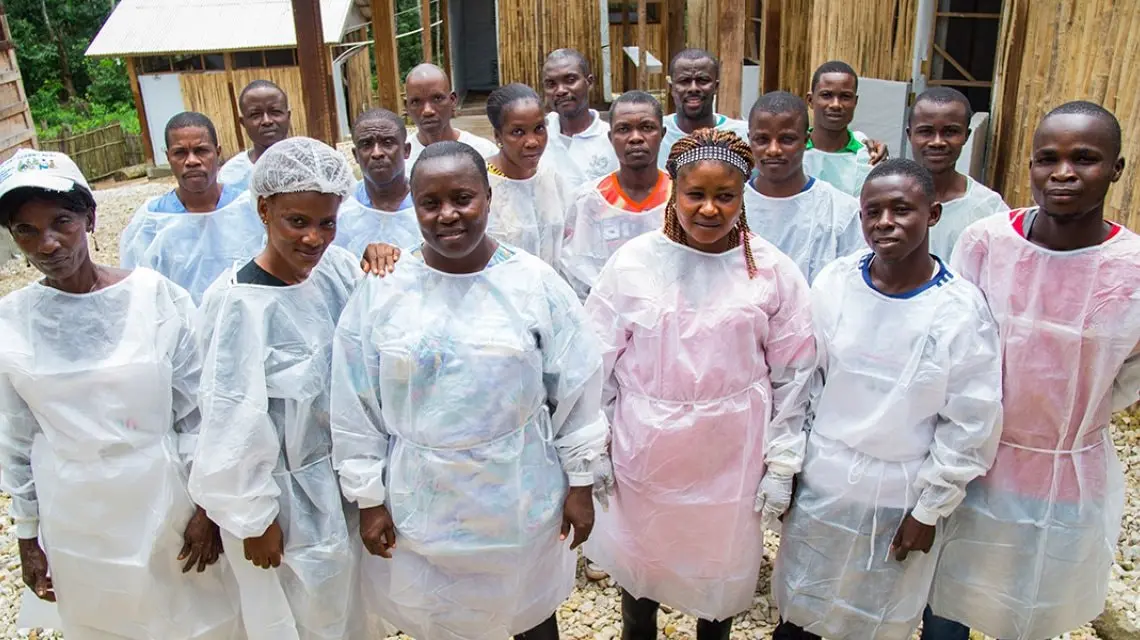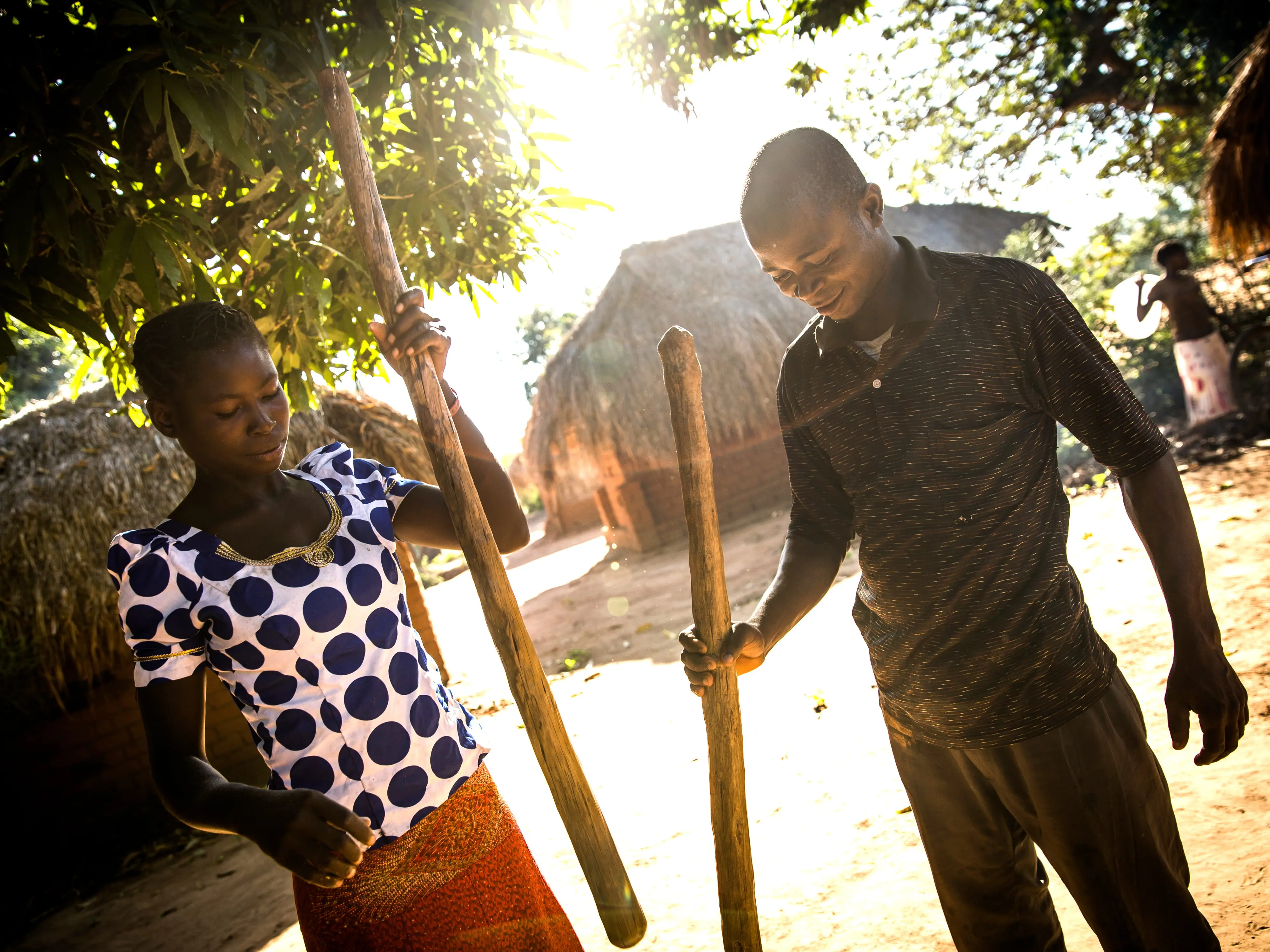News
The 10 Worst Countries to Be a Mother
Using the most recent data from the WHO, these are the ten “worst” countries to be a mother — at least in terms of how fatal the act of pregnancy and giving birth can be.
Read MoreLakshmi Puri, who has served as both the UN Assistant Secretary-General and Deputy Executive Director of UN Women, put it best in a 2013 speech: “Gender inequalities affect health outcomes and must be addressed accordingly.”
If gender equality saves lives, then the opposite is also true: Gender inequality costs lives. This is especially true in healthcare, where gender bias is both endemic and potentially fatal. Here are nine ways gender bias in healthcare shows up — and how Concern is working to create a healthier world for all.
Some historians trace “hysteria” back to the days of the Ancient Greeks. However, as Sabine Arnaud writes in On Hysteria: The Invention of a Medical Category between 1670 and 1820, doctors from the 17th to 19th Centuries had a habit of retrofitting this term to give it more credibility as a diagnosis. While it applied to both men and women in the beginning, hysteria soon became a catchall term for many health complaints largely made by women—including premenstrual syndrome, premenstrual dysphoric disorder, anxiety, depression, and post-traumatic stress disorder.
By the end of the 1800s, treatment of hysterics in Paris’s Salpêtrière Hospital (methods included hypnosis and piercing) were sold as entertainment for the public. A generation later, Sigmund Freud refined the diagnosis—albeit through faulty and biased research. It was only in 1980 that “hysterical neurosis” was removed from the Diagnostic and Statistical Manual of Mental Disorders. Its legacy, meanwhile, lives on.

The idea that pain is “all in your head” still disproportionately plagues women today, and applies to physical distress as well as mental. Some studies have shown that women use healthcare more often than men. This has led to a stereotype summarized in a 2017 Guardian article as: “Men are silent stoics; women hysterical hypochondriacs.”
This, as Diane E. Hoffmann and Anita J. Tarzian showed in their 2001 study, “The Girl Who Cried Pain: A Bias Against Women in the Treatment of Pain,” has implications on how women are treated. “In general, women report more severe levels of pain, more frequent incidences of pain, and pain of longer duration than men, but are nonetheless treated for pain less aggressively,” write Hoffmann and Tarzian. They attribute this in part to gender bias, specifically “a long history within our culture of regarding women’s reasoning capacity as limited.” The repercussions of this can be dire, Hoffmann and Tarzian add, as women are statistically more likely to receive inaccurate or inadequate treatment if their pain is not taken seriously.
“Men are silent stoics; women hysterical hypochondriacs.”
In tandem with inadequate pain management is a lag time in getting an accurate diagnosis for women compared to men. The World Health Organization estimates that 10% of women around the world suffer from endometriosis, a chronic illness affecting women during their menstrual cycles. Yet the UK’s National Institute for Health and Care Excellence reveals that this diagnosis takes an average 7.5 years to reach — meaning that people seeking care for a monthly, chronic pain could spend as much as three-quarters of a decade finding the right course of treatment.
This is part of a pattern in how long it takes women to get answers versus men. One UK study examining over 18,600 people with 15 different types of cancer found that women consistently waited longer for a diagnosis after first noticing their symptoms. Women are also less likely to get adequate treatment for heart disease — or even CPR. One study of this, presented in 2017 and funded by the Heart Association and the National Institutes of Health, examined nearly 20,000 public cardiac arrest cases. Of these, 45% of the male cases were given CPR. Only 39% of women received the same treatment; something the study authors believed was a gender bias: “It can be kind of daunting thinking about pushing hard and fast on the center of a woman’s chest,” study lead Audrey Blewer told The Guardian.
A similar study, published in 2019, saw similar disparities along gender lines: Only 68% of women received bystander CPR, compared to 73% of men. The study, led by University of Amsterdam cardiologist Dr. Hanno Tan, also revealed that survival time between cardiac arrest and hospital admission was three percentage points higher for men (34% vs. 37%), and that the chances of survival from admission to discharge was nearly 50% higher for men (37% of women and 55% for men).

Women’s legal rights in many countries — including those where Concern works — conflict with their human rights and requirements for quality reproductive healthcare. Often to fatal consequences. The United Nations Population Fund (UNFPA) estimates that 6.5% of women around the world want to avoid pregnancy, but are unable to do so due to a lack of access, social stigma, and harmful gender norms (among other reasons). Among them, 172 million women are using no birth control method at all. Where data is available, the UNFPA also reports nearly 25% of all women feel unable to say no to sex with their partner. “These [circumstances] all reflect the pressure that societies place on women and girls to become mothers,” concludes the UNFPA.
In many countries, pregnancy can be a death sentence for women and girls. Often this is due to gender biases. Pre-pandemic, an estimated 810 women died every day due to preventable causes related to their pregnancy or childbirth. Complete data have yet to indicate whether this number has gone up due to the pandemic. Almost all of these deaths occur in low-to-lower-middle–income countries. Part of this is due to a lack of infrastructure in many countries when it comes to healthcare, especially in remote and rural regions. Beyond this, however, pregnant and lactating mothers face a multitude of barriers when seeking care. Many cannot afford to access healthcare, receive poor quality service, or lack the information necessary to have a health pregnancy and childbirth. In some cases, harmful gender norms — such as women not being allowed to leave the house without a man’s permission or accompaniment — keep pregnant women at home and without the care they need and deserve. This is especially true for girls under 18.
One way this can be prevented is by meeting the needs for reproductive healthcare and education—for girls/women and boys/men—from adolescent development through to maternal health and newborn care. A study from the Guttmacher Institute estimates this could reduce maternal mortality rates by nearly three-quarters in low-income countries.
As we’ve written before on gender-based violence, the issue is both a human rights violation and a public health crisis. Gender-based violence can affect survivors’ physical and mental health long after the attack itself. Many forms of GBV specifically affect the health of the targets of such violence, including FGM and sexual assault. Survivors need to have access to the resources they need in the wake of these events, such as emergency contraceptives and STD screenings.
However, the stigmas surviving survivors of sexual assault and other forms of GBV leave women reluctant to seek healthcare after an attack — even if there are specific laws against such behavior in the country where they live. Statistics vary by country, but in Bangladesh, only 30% of cases were reported as of 2015, and less than 3% of survivors pursued legal action. A 2013 survey of 24 low-income countries showed that only 7% of cases went reported. Again, these gendered inequalities can have fatal consequences.

One of the issues underpinning many of the above gender biases in healthcare is a lack of equity in research. Men’s and women’s bodies function differently from one another. Symptoms for the same condition or disease present differently depending on gender. Medications may have differing side effects. Yet often the research that fuels diagnoses and treatments is limited to male subjects and testing. Dr. Janine Clayton, Director of the Office of Research on Women’s Health at the National Institute of Health in the United States, explains that “much of medical science is based on the belief that male and female physiology differ only in terms of sex and reproductive organs, she says. Because of this, most research has been conducted on male animals and male cells.”
“Because we have studied women less, we know less about them. The result is that women may not have always received the most optimal care.” — Dr. Janine Clayton
One way we could solve some of these gender inequalities is by establishing greater gender equity among those working in healthcare. Women are already highly represented in the frontlines of health. In the United States, they represent 66% of all entry-level healthcare employees. However, only 30% make it to the top of the ladder.
Headquartered in France and comprising 37 member countries, the OECD reports a similar statistic: Around three-quarters of people working in health and social care are women. However, the organization adds, “women working in the health and social care sector are often in lower-paid jobs.” Women represent less than half of all doctors in OECD member countries, and they often earn less than their male colleagues even after accounting for factors like age and experience.

This becomes a problem when female health workers are able to understand a fellow woman’s symptoms, but lack the credentials or respect to help influence adequate diagnosis and treatment. In addition to being underpaid, many women also complain of gender discrimination within their own workplace. An independent investigation of the British Medical Association (the trade union for doctors and medical students in the UK) found limited cases of sexual harassment, but stressed that even more harmful, were “the genuine complaints of the persistent undermining and undervaluing of some women doctors and staff, together with a corrosive and combative culture of ‘I’m right, and you’re wrong, and I know best, and you don’t know what you’re talking about.’”
Even if these incidents happen behind the proverbial closed doors, their impacts can be felt by patients.
While women are statistically more likely to be discriminated against on the basis of their gender — in healthcare and in many other aspects of life — not all inequalities are experienced equally. Weight bias in healthcare has become a topic of greater study in recent years, and further study has shown that this, too, is more likely to affect women than men. This can lead to misdiagnosis as well as mental stress (and even eating disorders) for patients.
Race/ethnicity and income are also major compounding factors for receiving adequate healthcare — all the more for women. In some countries, marital status, caste, tribal affiliation, religion, sexuality, and immigration status (especially for refugees) are also additional issues that may make an already-discriminatory atmosphere even moreso.
Likewise, gender bias in healthcare becomes even more discriminatory when we look at gender beyond the binary of male and female. Even in high-income countries, transgender and nonbinary people often have fewer legal protections than women, and are more likely to face discrimination. A recent study of patients in the United States revealed that almost half of all trans adults in the country experienced discrimination from a healthcare professional based, or have been denied coverage for gender-affirming healthcare by their insurance. Two-thirds worry that their diagnoses and treatment will be affected by this discrimination.
“Rather than devising new ways to cope with changing social norms, transgender people are often shoehorned into inappropriate boxes instead,” writes BBC journalist Zaria Gorvett. There are similar issues at play around the world: A 2019 study revealed the lack of resources for reproductive healthcare for transgender people in South Africa. In Kenya, where homosexuality is against the law, there is also a lack of adequate resources and little support for the country’s transgender community.

Based on decades of experience, Concern has adopted an integrated approach to healthcare, especially for maternal and child health. We believe that many factors influence the health of mothers and children, such as nutrition, hygiene and sanitation, environment, gender attitudes, access to healthcare, and culture.
Much of our work involves designing solutions with mothers (and their partners) to the challenges faced every day in the world's poorest countries. At the community level, implement those solutions daily. At the national and international levels, we take every opportunity to advocate on behalf of women and children for better health outcomes.
In Malawi, our innovative Health Center by Phone project (funded as part of Innovations for Maternal, Newborn, and Child Health) was integrated into the national health system, providing free access to health advice and telemedicine services in hundreds of remote communities.
In Bangladesh, Burundi, Niger, Kenya, Rwanda, Haiti, and Sierra Leone, our Child Survival programs (funded by USAID) impacted millions of mothers and young children over the past 20 years. Our research in these programs contributed to life-saving advancements in community health.
In South Sudan, we have established a network of mobile health clinics providing health services to pregnant women, lactating mothers, and children under the age of 5, who otherwise would go without vital checkups or treatment, directly in their own villages.
“When mothers understand the risks and benefits and are well supported by their community, they are more likely to seek care,” explains Concern Health Advisor Megan Christensen. “It’s up to us to give them the knowledge and mechanisms they need to make healthier decisions for themselves and their families.”